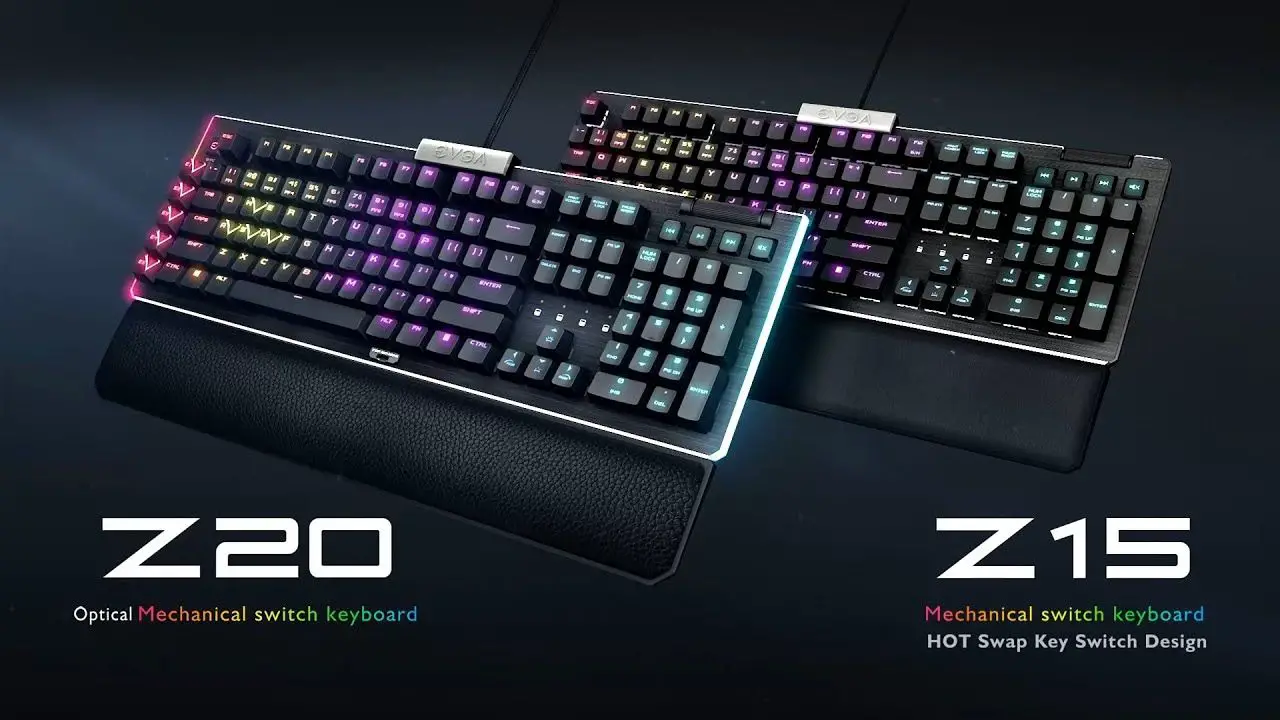
Much like all previously reviewed Crucial products the new X6 series makes use of a ‘classic Crucial’ shipping container. One that is attractive in a conservative manner, has a decent amount of information listed, and generally speaking gets the job done with its own sense of style. With that said, and just all other models we have looked at in the past, this similarity means buyers in brick ‘n’ mortar stores will have to pay careful attention to the label… as they would not be the first to pick up and then purchase the wrong model… even mistakenly buying a Crucial internal SSD drive. So be careful and read the label of the box in your hand before you buy.
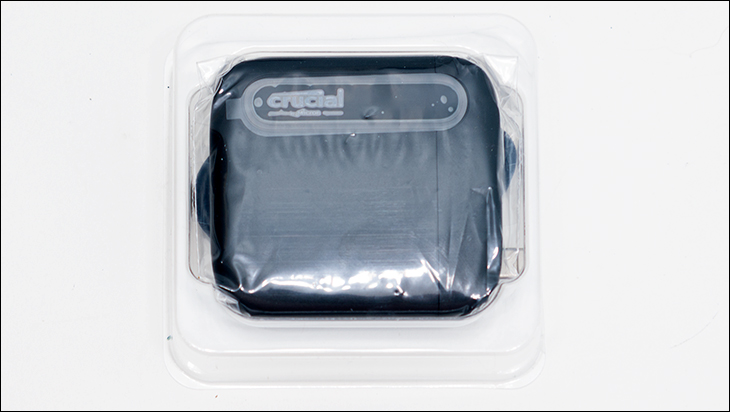
The internal protection is also the same and consists of a nice plastic tray that secures the X6 while in transit and will ‘crumple’ before passing on any blunt force trauma. Basically, its light weight nature is tailor made for this lightweight model, and while we would be hesitant to let a ‘roid raging warehouse worker anywhere near it, it should survive the typical shipping bumps and bruises.
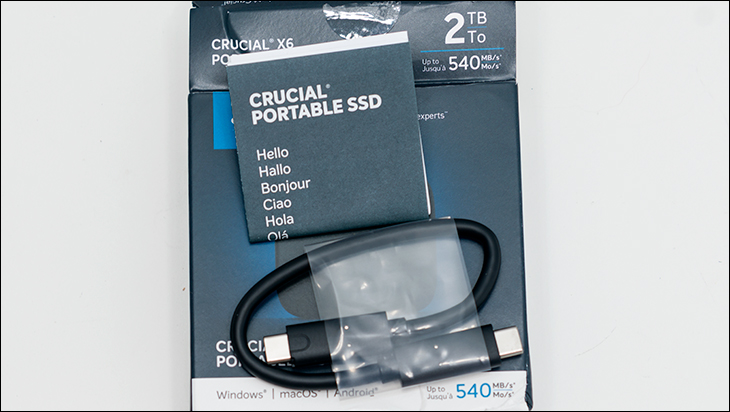
The accessory list is very… very reminiscent of the X8 2TB we looked at just a little while ago. That is to say you get an excellent, if short, Type-C to Type-C USB cable and a nice instruction pamphlet. That however is all you get. If you are interested in a Type-A to Type-C adapter (i.e. the one that came for free with earlier X8 models) you will have to buy it yourself. Crucial has made a deal with Amazon and it will only set you back a few dollars. However, and unlike the X8 2TB, the X6 is not noticeably cheaper than its competition. Competition which generally do come with this adapter for free. As such the accessory list, for a SATA SSD based model, is good but for this price we do expect a couple dollar adapter to be included in the box. At this time Crucial’s Storage Executive application is also incompatible with the X6 series. This however is most likely just a short-term blip and a soon to be released up should fix it. Hopefully.

Moving on. The first thing that jumps at you on first picking up the X6 2TB is how lightweight and small it is… and how much it looks like a Silicon Power PX60 that skipped the ‘detailing’ stage of its design process. This is a little bit unfair, but much like Silicon Power and their PC60 model, Crucial has opted for a cute, squarish, injected molded design to house their X6 internals. Unlike the PC60, Crucial has not included a lanyard hole and rather this is a more solid looking model. Albeit one that is not as ‘grippy’. Sadly, this smooth plastic is also a touch more boring looking compared to the PC60 and its nicely stylizing topper. It is however lighter… as this two Terabyte model weighs less than the 1TB PC60. To be precise it weighs 4 grams less at 42grams vs 46 grams.
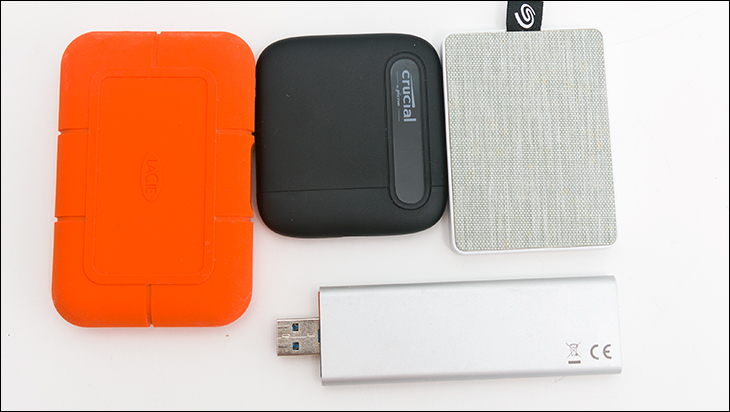
Also like the Silicon Power PC60, the Crucial X6 2TB is not the smallest we have ever seen. It is noticeably bigger than Seagate’s entry level offerings for example. This is not a bad thing. Unlike those itty-bitty, darn near thumb drive sized models, you will not loose the X6 in your couch cushions (which we have done in the past). It will however easily fit into a pants pocket and generally speaking is ‘right sized’. Big enough to comfortably hold yet small enough, and light enough, that you can put this in your tablet’s travel bag and not even notice the added weight or ‘loss’ of room.

The one major issue we have with this chassis is the same as we had with the Silicon Power PC60: it is plastic. Yes SATA controllers, and TLC NAND, run cooler than NVMe models. They do however produce heat. Heat that cannot be transferred to the chassis and turn it into a big heat spreader. We understand why Crucial opted for an all plastic over aluminum + plastic chassis as it would have added weight and cost… we just disagree with their priorities. If this had been a metal clad model it would be easily the inexpensive option to buy versus LaCie and their various durable SATA SSD based models.
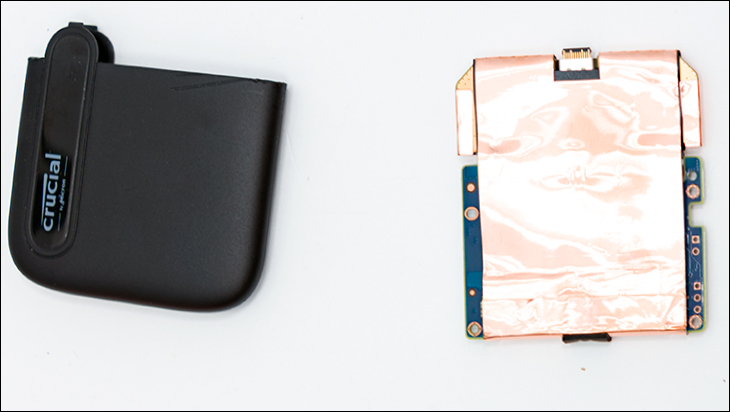
On the positive side, shucking this case is a whole lot easier than the X8s. A simple spodge and about ten seconds work and you crack this bad boy open in to its two ‘C’ shaped parts. This ease of opening is a big reason why the X6 has lower 6.5ft drop rating vs 7.5ft of the X8. Sadly, and much like the X8, there is no dust or water protection certifications and… we do not for one second trust this drop rating. It is taken by dropping on to carpet. That is not as easy as say dropping it in to a vat of Jell-O but do not try to replicate it at home on to actually hard surfaces. The top half of the case will pop off and the SSD inside may fly off on its own like a small bottle rocket… as that is what happened when we dropped it from ~6 feet on to concrete. Thankfully it did actually survive this ordeal so it is not necessarily a deal breaker.
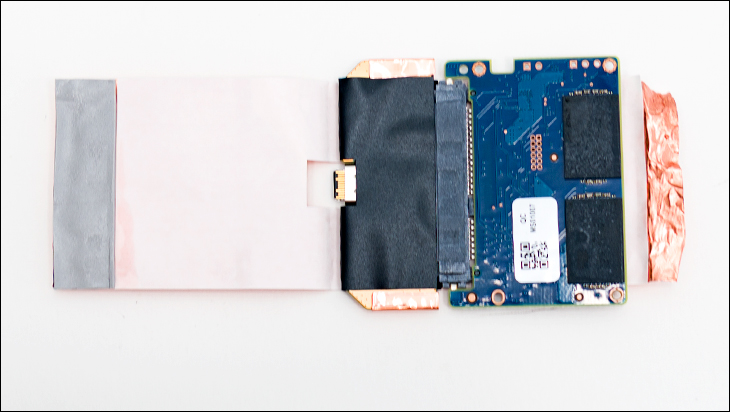
Moving on. Even on just a quick glance at the internals and you can tell Crucial is taking EMI and cooling seriously. Yes, the two-piece plastic chassis can not be used at a heat sink, but the entirety of the internals is wrapped in copper foil. Copper foil that is attached to the hot running components via heat pads. This ‘internal heat spreader’ may not be in the same league as what the X8 uses but it is head and shoulders above what you typically find in the SATA SSD external storage solution market… and only LaCie does things better. Of course, to get that ‘better’ you have to willing to blow your budget right out of the water, and the X6 is the best we have seen this side of LaCie in a long time.
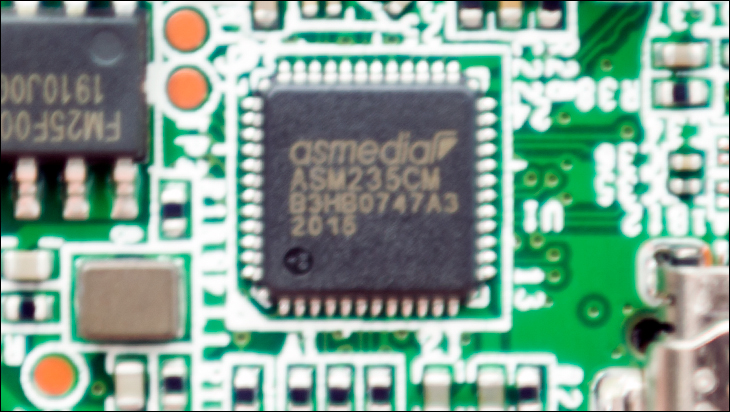
After (carefully) peeling the copper foil… you will find a ESD blocking heat tape covering the adapter PCB. Hidden underneath is the small adapter PCB which houses the good ASMedia ASM235CM SATA to USB bridge controller. This is the same controller found in many a SATA SSD based external storage solution as it is fast, powerful, and rather reasonably priced.
While it may lack the plastic shell of its internal brethren, even just with a cursory glance it is obvious that the Crucial X6 2TB is using Crucial’s BX500… right now. Much like ‘Windows 10’ or ‘OS X’ versions (and abilities) can change at a whim, the drive inside the X6 will change over time. Change without a change in model name. So do not expect a X6 2.0 or X6.5. Instead in the future you may face a situation where ‘old’ or ‘original’ X6’s will be sitting right next to ‘new’ X6s on store shelves with no real easy way to tell one from the other… and no way to know which to buy.
This is called submarining or a ‘silent upgrade’… and what helped lead to OCZ eventual downfall back in the day. We doubt the same will happen to Micron’s consumer division but it is not a Good Thing™. In either case, right now, the drive used means a SMI 2259XT controller paired with four TLC NAND ICs. Of note is it appears that Crucial has not silently updated their BX500 series (again). Instead, just as with the BX500 960GB’er the 2TB variant of the BX500 makes use of Micron’s excellent 96-layer TLC NAND with NAND found on both sides of its small PCB. Ironically, this is much better NAND than the 96-layer QLC NAND found in the X8 2TB. The reason this sounds backwards is Crucial’s X6 design team put their budget into the NAND, whereas the X8 team put into making a robust, single sided NVMe based model that did not cost a fortune.

Counteracting this, is the SMI 2259XT controller is a DRAM-less controller – I.E. it does not rely on on-board cache and instead uses your systems main DDR4 RAM for its buffer. Typically, ‘DRAM-less’ and ‘external storage’ is a sub-optimal combination. In testing the X6 is the exception that proves the rule, and should put to bed any concerns over this being an actual issue for the typical buyer. Basically, Crucial is not using standard SMI firmware, nor even the same firmware as what the internal BX500 variant makes use of. Instead it is using custom firmware that uses a portion of its pseudo-SLC buffer as cache for the controller. The size of the Dynamic Write Cache buffer is also large. Large enough that it will take time and effort to saturate it. In testing we used it as a dump drive for large XQD cards during a day long photo shoot and there was noticeably fewer blips in write speeds compared to the X8 2TB. That is a Good Thing™. In other words, the X6 can be faster in the real world and recover from a degraded state much, much faster than the X8. Color us impressed.
Overall, the X6 2TB is a decent little design. Not overly unique, but with enough tweaks to not be accused of following the pack. Now if only a “X9” could combine the NAND of the X6 series with the controllers of the X8 and Crucial would have one heck of a drive on their hands.





